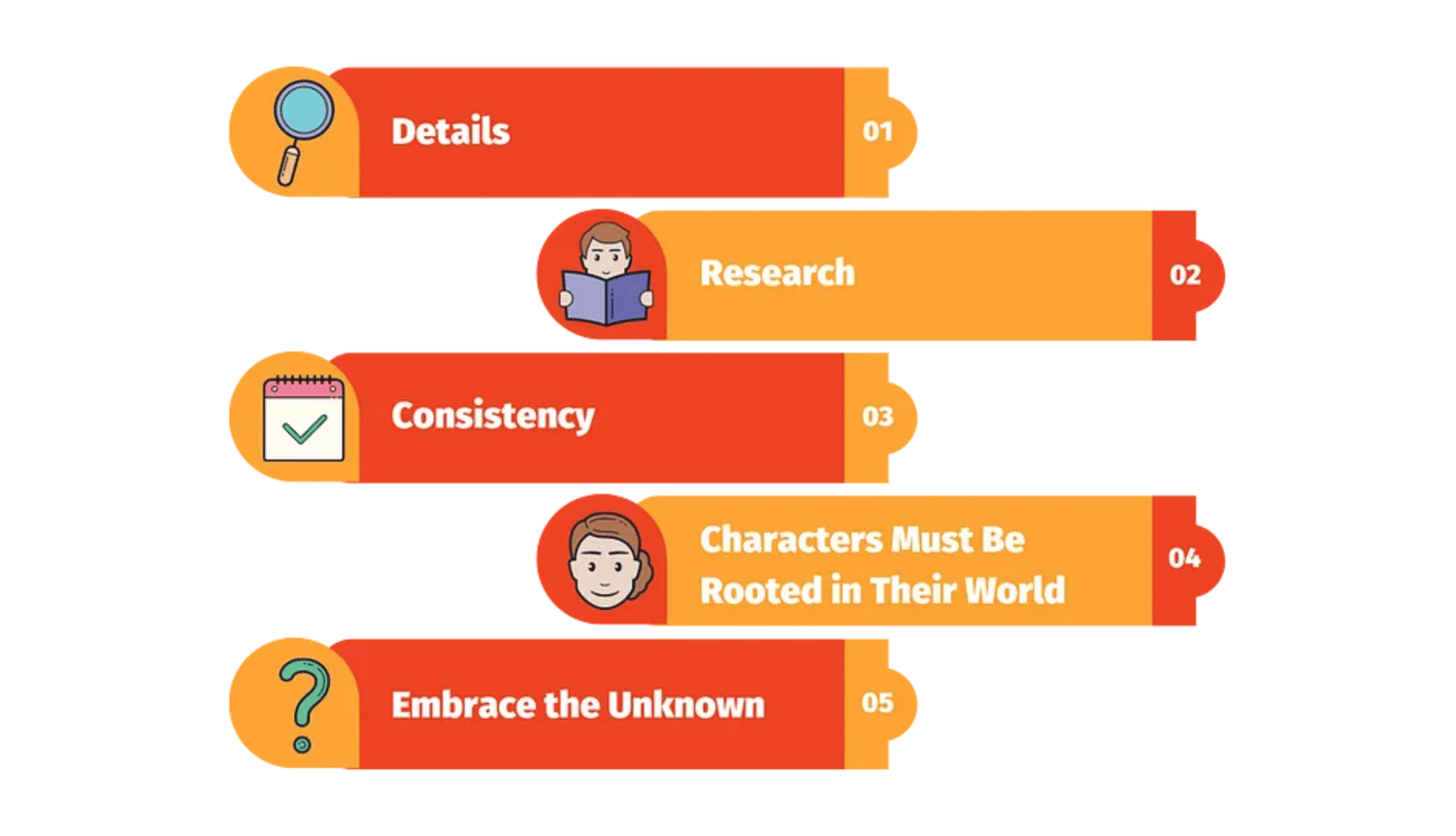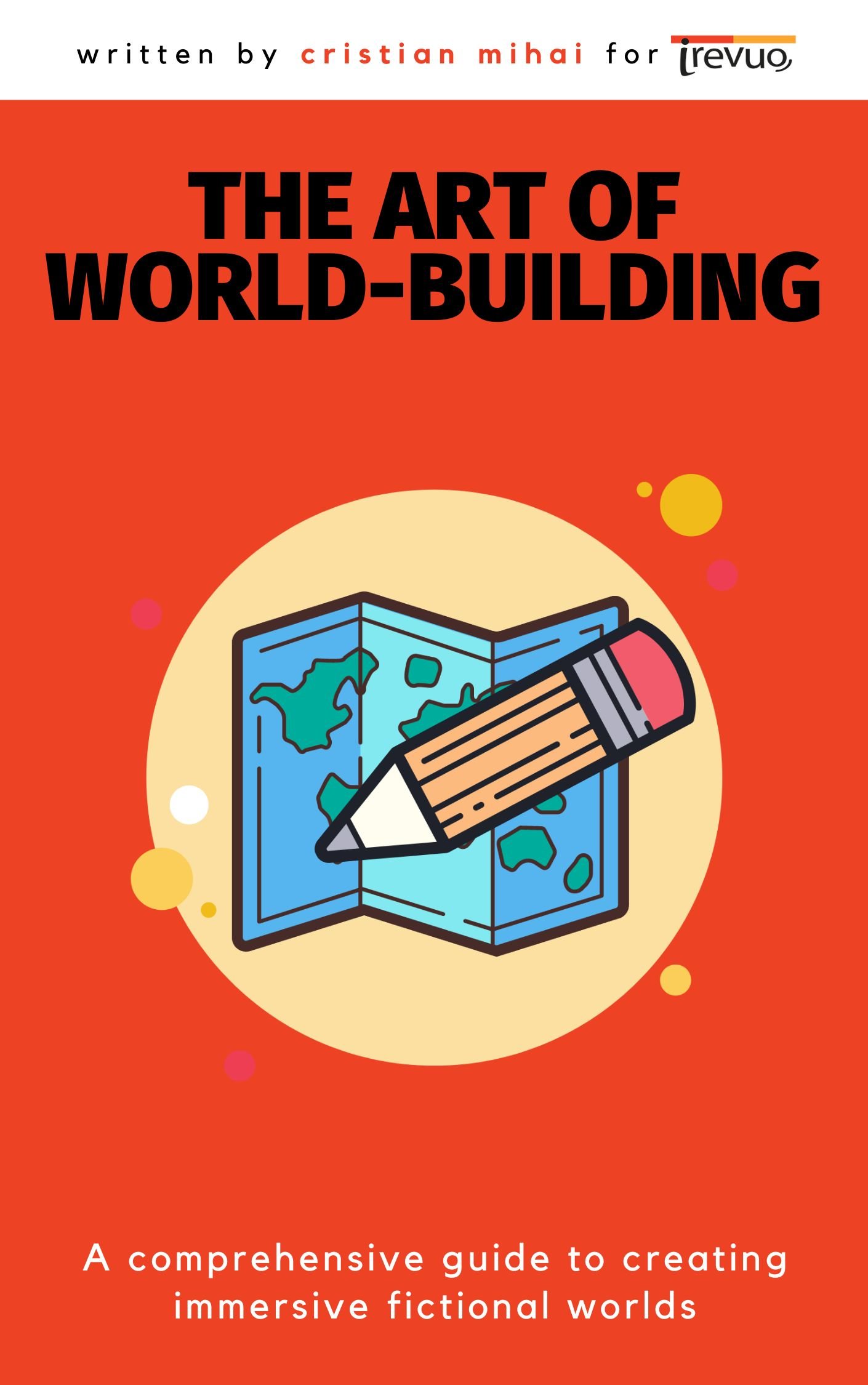Step into the magical world of Middle-earth, where hobbits roam verdant hillsides, wizards wield unimaginable power, and dark forces threaten to bring about the end of all that is good.
J.R.R. Tolkien’s The Lord of the Rings trilogy is a timeless masterpiece that has captivated readers for generations. But what makes this epic fantasy world so compelling? How did Tolkien create a world that feels so real and vibrant?
In this article, we’ll explore the world-building techniques that made The Lord of the Rings such a success. From the importance of detail to the value of research, consistency, character roots, and embracing the unknown, we’ll dive into the lessons that writers can learn from Tolkien’s approach, so let’s set off on a journey to discover the secrets of one of the greatest works of fiction ever written.

1. Details
One of the most significant takeaways from The Lord of the Rings is the importance of detail in world-building. Tolkien created an entire world, complete with its own history, languages, and cultures. He placed importance on even the smallest of details, such as the different languages the characters spoke, the types of creatures that roamed the lands, and the unique clothing they wore. As writers, we can learn from Tolkien’s attention to detail, and strive to create a fully-realized world for our readers.
Here are tips and tricks for adding details to build a fully-realized world:
- Create unique languages or dialects for different groups. Even inventing a few new words or expressions can add flavor.
- Construct family histories and genealogies for main characters. The more tangled and complex, the better.
- Give landmarks, buildings, cities and places unique characteristics. Consider architecture, climate, vegetation and overall "feel".
- Focus on senses beyond sight. Add sounds, smells, tastes and textures to make the world come alive.
- Give objects histories. Imagine where they came from and who previously possessed them.
- Include cultural traditions and holidays. Think calendars, rituals, ceremonies and celebrations.
- Build complex myths, legends and folktales that explain aspects of the world.
- Describe clothing, jewelry, tattoos and styles in granular detail. Consider materials, colors, patterns and trends.
- Pay attention to meals. What do people eat? What foods are scarce or luxurious? What dining rituals exist?
- Develop a bestiary of creatures. Give animals, plants and monsters traits that fit naturally into the world.
2. Research
Tolkien was a renowned scholar in the field of Anglo-Saxon literature, and his knowledge of mythology and folklore heavily influenced his work on The Lord of the Rings. He drew inspiration from various sources, including Norse mythology and the Finnish epic, the Kalevala. Tolkien’s extensive research helped him create a rich and vibrant world that felt grounded in reality. As writers, we should take inspiration from Tolkien’s approach and conduct thorough research to add depth and authenticity to our own worlds.
Here are tips and tricks for researching to build a fully realized world:
- Study history, folklore and mythology from cultures similar to what you envision. Look for inspiration.
- Research geography, climate, flora and fauna of real-world places that match your setting.
- Study linguistics to create believable constructed languages for your world.
- Examine fashion, customs and traditions from different time periods for inspiration.
- Research architecture, infrastructure and engineering relevant to your world.
- Consult scientific studies on topics like anthropology, biology and physics that could inform your world.
- Read stories from the folklore, mythology and oral traditions of cultures you draw inspiration from.
- Study art, music and performance from cultures and time periods similar to your setting.
- Consult with experts in relevant fields to answer questions and vet details for accuracy.
- Research niche topics that could add flavor, like types of foods, tools, weapons or crafts that would exist in your world. The more obscure the better!
Pro-tip: Consider creating a research document or folder to keep all your notes and sources in one place.
3. Consistency
Tolkien’s world-building was incredibly consistent. He created rules for his world and stuck to them, ensuring that everything made sense within the larger context of the story. He was careful not to introduce anything that would disrupt the established rules of his world, and as a result, it felt cohesive and believable. As writers, we should learn from this approach and make sure that the rules of our worlds are consistent and logical.
Here are some tips to maintain consistency while worldbuilding:
- Keep a detailed timeline of events to ensure things happen in the right order.
- Create an encyclopedia or codex of people, places and things in your world to reference. Continually update it.
- Ask yourself "why?" when creating details to ensure they make logical sense within the world.
- Have set "rules" for how magic, technology or other systems work and stick to them.
- Check details against previously established facts before including them in the story.
- Re-read your work periodically to spot inconsistencies that need fixing.
- Consider creating maps, family trees, and other visual aids to ensure relationships and geography align.
- Keep track of character traits, backstories, names and other defining features to avoid mix-ups.
- Run major plot points, twists or reveals by a "devil's advocate" to look for potential inconsistencies.
- Remember that consistency serves the reader, not you. If something doesn't align perfectly, consider fixing or retconning details for the reader's enjoyment. A seamless world is the goal!
4. Characters Must Be Rooted in Their World
The characters in The Lord of the Rings were rooted in their world. They had unique backgrounds and cultures that were shaped by the world around them. Tolkien’s world-building allowed him to create characters that felt like they truly belonged in the world he had created. As writers, we should strive to create characters that are influenced by the world around them, and whose actions and decisions are shaped by their environment.
Here are some tricks to root your characters in your world:
- Give characters meaningful relationships and connections to other people in the world.
- Consider how cultural and societal norms shape a character's beliefs and behaviors.
- Describe how a character's physical characteristics (race, gender, age, ability) impact their experiences and views.
- Explain how a character's socioeconomic status and class position affects their life within the world.
- Show how a character's profession, skills and education relate to the world's systems.
- Detail a character's history and background to illustrate how they have been formed by the world.
- Have characters speak in accents, idioms and phrases unique to their culture or region.
- Refer to characters using titles, honorifics or names that fit within the structures of the world.
- Explore how characters adhere to or rebel against the traditions, values and rules of the world.
- Reveal how events within the larger world impact characters on an emotional level. Their reactions
will deepen connections.
5. Embrace the Unknown
Tolkien’s world was vast and mysterious, with many unknown elements waiting to be discovered. He didn’t feel the need to explain everything, and instead allowed readers to use their imagination to fill in the gaps. This approach created a sense of wonder and intrigue that kept readers engaged. As writers, we should take inspiration from Tolkien’s willingness to embrace the unknown and leave some things to the reader’s imagination.
Here are some tips to embrace the unknown in worldbuilding:
- Leave some details vague or unexplained to create a sense of mystery. Not everything needs a concrete answer.
- Allow some events in the world's history to be obscure, contested or lost to time. This adds depth.
- Resist the urge to define every creature, place or object in the world. Some unknowns can be powerful.
- Leave room for characters to discover new things about the world as the story progresses. Avoid info-dumping everything upfront.
- Include prophecies, legends and stories that may or may not come true to create a sense of destiny.
- Consider how impossible, magical or supernatural forces could shape the world in intangible ways.
- Pose big questions about the nature of reality within the world that remain unanswered.
- Use juxtaposition to highlight contrasts between what is known and unknown.
- Show how characters grapple with or are shaped by the unknowable aspects of the world.
- Foreshadow future revelations or discoveries that will reshape a character's understanding of the world. Build anticipation for answers to emerge.
The Lord of the Rings is a masterclass in world-building, and there are many lessons that writers can learn from Tolkien’s approach.
The importance of detail, the value of research, consistency, character roots, and embracing the unknown are just a few of the many takeaways from this legendary work of fiction. By studying Tolkien’s world-building techniques, we can create our own fully-realized worlds that captivate readers and stand the test of time.




Comments ()